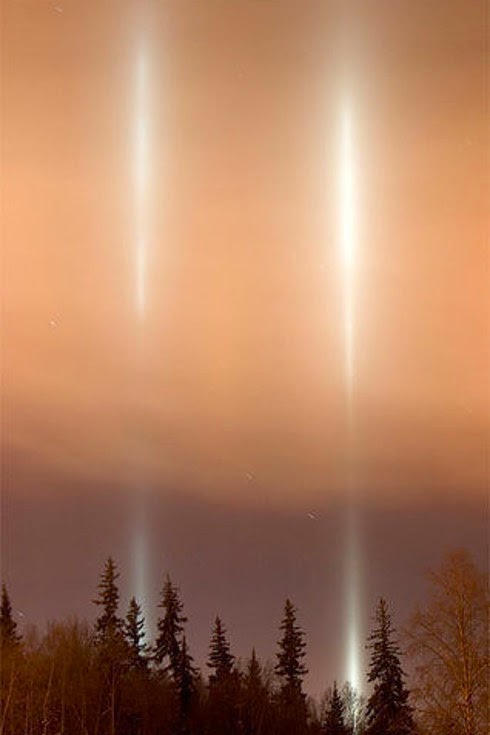20. Mammatus clouds, aka “mammary clouds” or “breast clouds”
21. Polar stratospheric clouds
also known as nacreous clouds (from nacre, or mother of pearl, due to their iridescence).
22. Undulatus asperatus aka “roughened or agitated waves”
This cloud formation has been proposed as a separate cloud classification by the founder of the Cloud Appreciation Society and would be the first new type of cloud recognised since 1951.
23. Tanzania’s Lake Natron: a salt lake fed by mineral-rich hot springs that is the only regular breeding area in East Africa for the 2.5 million lesser flamingoes.
The flamingo population has been adversely affected in recent years by suspected heavy metal poisoning, and the lake is currently under threat by a proposed soda ash plant by Tata Chemicals.
24. Canada’s saline endorheic alkali Spotted Lake: contains some of the highest quantities of magnesium sulfate, calcium and sodium sulphates in the world.
25. Bioluminescent waves on a beach in the Maldives: Various species of phytoplankton are known to bioluminesce; when washed ashore by the tides, their chemical energy is turned into light energy.
26. Bioluminescent dinoflagellates + the right conditions = Red Tide: a condition where the dinoflagellates become so numerous that the water takes on a muddy reddish colour.
27. Light pillars: an optical phenomenon formed by the reflection of sunlight or moonlight by ice crystals that are present in the Earth’s atmosphere.
28. Rainbow eucalyptus aka rainbow gum: patches of outer bark are shed annually at different times, darkening and maturing to give blue, purple, orange and then maroon tones.
29. Frost flowers: ice crystals commonly found growing on young sea ice and thin lake ice in extremely cold, calm conditions nearing -22C or -7.6F.
30. Snow chimneys on Mount Erebus, Antarctica: the southernmost active volcano on Earth.
Special mention: The Moskstraumen is a tidal whirlpool, one of the strongest in the world, that forms in the Norwegian Sea*.
The Moskstraum was the inspiration for Edgar Allan Poe’s short story A Descent into the Maelström (1841), which brought the term maelstrom into the English language.

















Comments
Post a Comment